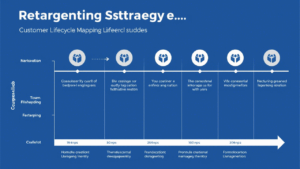You’ve set up your account, selected a product, created content with your affiliate links in it and launched your campaign. Now what? Whether it hasn’t blown up yet or is already producing some steady traffic (and revenues!) – there is always something you can do in order to improve your performance and increase your earnings. In this tutorial you will learn how to track your performance In a few simple steps, so you can better view how your campaign is doing, and where improvements can be made. We believe that there is always room for improvement (and some extra cash).
We are going to cover two things in this blog:
Tracking performances Improving / optimizing performances
Let’s start with the tracking first
How to monitor my campaign performance through the media report
You can monitor your campaign’s performance – impressions, visits, FTBs, and commissions – over a specific time period through the report; sort data by days, months or years; and divide it up to different countries and different creatives.
The Media report can be used to compare different campaigns and promotions, and determine which one is performing better:
In replacing one campaign with another, or modifying a current campaign, the media report can be used to determine the effect of the change on the performance by comparing the performance before and after the change.
When having multiple campaigns going at the same time – we want to be able to view each campaign independently, and compare performances. In order to do that, we need to insert tracking codes in our affiliate links:
Instructions on how to use tracking codes
A majority of the affiliates are running multiple campaigns simultaneously – promoting Fiverr on different channels, using various promotion strategies or even publishing multiple creatives or pieces of content. Each campaign drives its own traffic to Fiverr, and thus it’s a different traffic source with its own performance.
By contrasting how different traffic sources perform, tracking which one brings in more traffic, more sales, and more commissions, we determine which campaigns and promotions work best; which ones to keep, and perhaps even enhance, and which aren’t performing and must be rewritten or replaced.
In order to split your traffic to the different traffic sources, you must first append a unique tracking code to the affiliate links within each campaign.
Either monitor the performance of a single campaign by searching your results on a specific Tracking Code, or split your data into Tracking Codes and compare all traffic sources at once.
Break down data by tracking codes (Media Report > Breakdown > Tracking Code):
Monitor a specific campaign by choosing the data passed through a specific tracking code (Filter By > Tracking Code):
By clicking on the different parameters, results can be shown in descending order by the number of Impressions (if creative), Clicks, Registrations, and FTBs (high to low), showing the best performing sources of traffic for each parameter.
We have finished the tracking part, now let’s improve….
How to improve your performance – some advice
Now that you know how to monitor your campaign’s performance, it’s time to find out how to get the best out of the data to improve it. Read these tips to learn how to get valuable insights from your data, and use it to improve your performance and maximize your revenues:
Adjust or replace underperforming campaigns
Since you are now able to track different traffic sources independently and compare them with each other, it is easy to know which type of campaigns perform the best and keep doing it. However, you must be able to know why the better performing campaigns are performing that way, so we can rectify the weaker performing campaigns as well and increase our overall performance.
The most basic reason for poor performance is that the campaign just does not get enough exposure. If your website or social media platforms are not viewed or visited extensively, campaigns advertised through it will by default have fewer visitors. Check out our Affiliate store where you can discover services to build your own channel: www.fiverr.com/stores/influencer
If the page on which you’re operating the campaign does have huge impressions, then there are certain reasons why your campaign is still not getting as much traffic (visits):
Placement – it is possible that the tracking link or creative on which you are operating is being viewed less often. Try and change its placement, and display more banners/links so you make sure that your users are able to see it.
Product – the other option is that the products/categories you opted to promote are not actually your audience’ interest and taste. You can try to promote another product instead, test the effect on the performance.
Message – the other option could be that there is something bad with how you chose to promote certain products – the content/creatives you chose may not be suitable to your audience.
A decent indicator of that would be if other creatives or content selling the same products and getting similar visibility are pulling more than others.
Bottom line, when you have under-performing traffic sources, make sure that your promotions are properly placed and are seeing sufficient visibility, that you chose the appropriate product to sell to your viewership, and that you’re using the most similar creatives and ad tools. Try out combinations and see how their impacts scale out on your different campaigns until you optimize what each one of them can deliver through the Media report.
Test different Destination URLs
Another thing to consider which needs to be done is the Destination URL – i.e., the Fiverr page which the link is pointing to. Affiliates can choose to send their traffic to the Fiverr home page, or create a deep link pointing to any Fiverr page, like category pages, search results, individual buyers and sellers, etc.
Sometimes it is worth experimenting with various destination URLs until you discover the one that works best.
Following the alteration of the destination of a deep link used in a given campaign, the number of clicks can be expected to vary (since there was no alteration in campaign exposure and quality, which are factors about the likelihood of users who come across it to click or not), but rather, a change of conversion rate, i.e., the ratio of the number of clicks and FTBs, has to be expected.
The nearer and more targeted the destination is to the users, the higher the number of them that will end up placing an order when arriving on Fiverr – turning into a commissionable FTB. It is also feasible to test multiple destination URLs at a time by adding tracking codes to links that lead to different destinations.
Last but important Tip from us – Find out what your best selling products are
Last tip that will assist you in refining your campaigns and improving your outcomes – utilize the Earning Report to determine which categories your traffic is converting into.
If you find that a reasonably significant amount of your traffic is ending up buying a specific product – this is a positive indicator that your audience is interested in it. This is a valuable piece of information:
If you have a mass campaign, promoting Fiverr as a marketplace – you may want to focus your campaigns on your best-selling categories. If you have campaigns running for individual services, but your users end up buying others – consider switching. After you have made the change – check the media report for traffic and conversion rate differences.
If you are promoting something that your audience is actually going on to buy – great! But remember that it doesn’t hurt anything to review other similar products too from time to time, there may always be something better.




